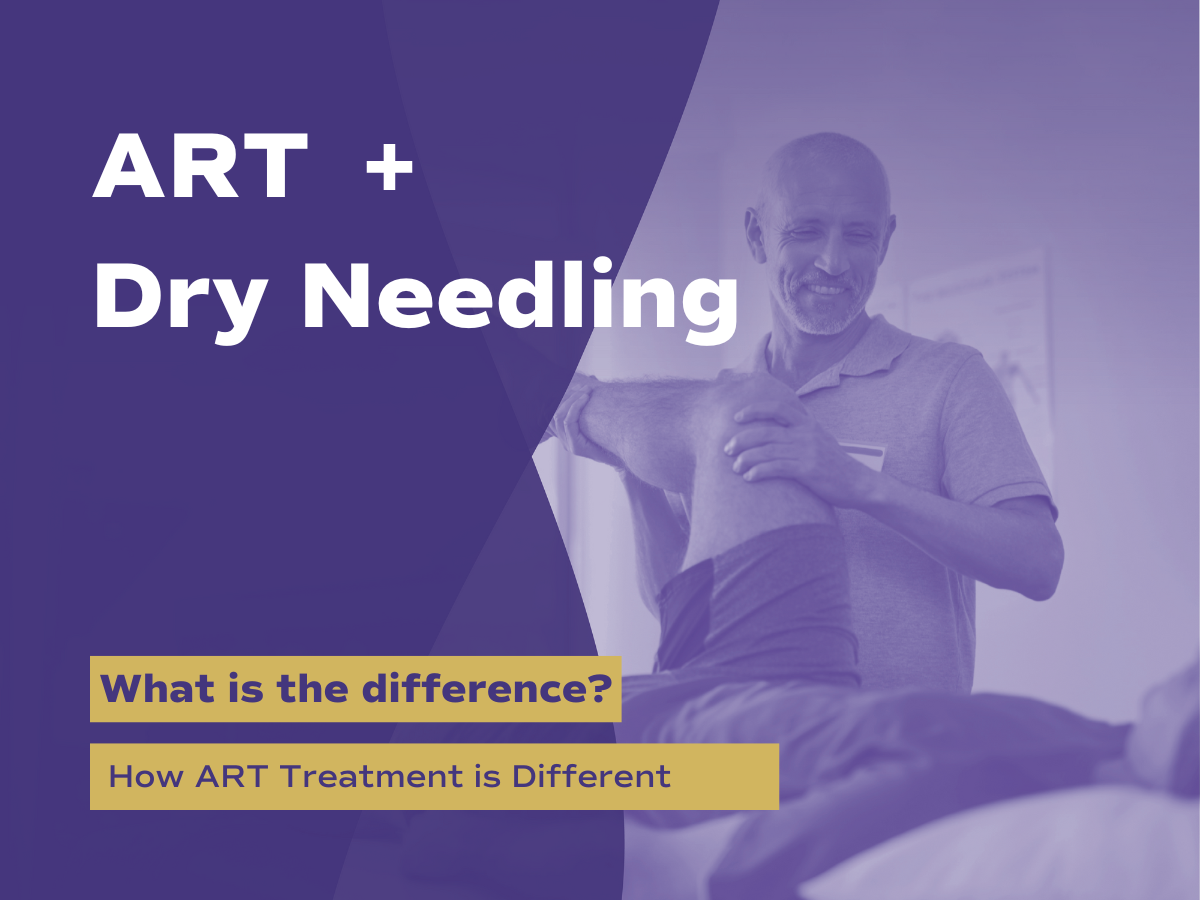What’s the Difference? ART and Dry Needling.
Active Release Techniques® (ART®) treatment and dry needling both aid in the healing process to lessen scar tissue and restore full motor function of muscles. They share a similar goal, but there are some key differences between the two care methods.
What is ART treatment?
ART treatment is a non-invasive system that treats soft-tissue and nerve dysfunction at the source. This hands-on treatment uses a combination of provider touch, depth, and tension with patient movement to pinpoint and treat the origin of the affected area.
What causes soft-tissue damage?
Soft-tissue damage to muscles, ligaments, and tendons can be caused by everyday movements, sports injuries, blunt forces, and overused muscles. Common signs of soft-tissue damage include:
- Sprains
- Bruises
- Tendonitis
- Bursitis
- Stress injuries
- Strains
What is dry needling?
Dry needling is a procedure that uses a thin filiform needle, which does not inject anything, to break down the knotted muscle tissue and ultimately heal trigger points.
After dry needling, a trigger point should have less pain due to increased blood flow and reduced tightness. Trigger points are tight bands within a muscle fiber that are created when the muscles are under stress and tension.
How are trigger points treated?
A thin needle relieves pain in a trigger point from the muscle being broken up. The goal is to relax the muscle to improve its movement and motion. Depending on the source of pain, the dry needling will be superficial or deeper into the muscle.
Are there risks?
There are no reported risks associated with ART treatment, but there are minor side effects that dry needling can cause which include:
- Temporary soreness
- Bleeding at the source of treatment
- Fainting
- Fatigue
- Bruising
The benefits
Who benefits from ART treatment?
Anyone with soft tissue can benefit from ART treatment. When muscles, ligaments, tendons, and nerves are overused or do not function properly, ART treatment should be considered. ART treatment doesn’t require a prescription or referral from a physician.
After treatment, patients can expect to feel increased muscle mobility and less pain through:
- Decreased stiffness
- Improved range of motion
- Relieved joint pain
- Decreased inflammation
Who benefits from dry needling?
Dry needling is a beneficial treatment for those who are suffering from the conditions listed below:
- Myofascial pain syndrome
- Fibromyalgia
- Chronic stress
- Tense muscles
After treatment, it’s common to feel sore until the following day, but muscle tightness and pain should be relieved.
So, ART treatment or dry needling?
ART treatment and dry needling can be paired since ART diminishes scar tissue, adhesions, and contractures and dry needling works to repair the way the brain speaks with the muscles to improve function and rid of the trigger points.
Both are great treatment options and share a common goal of healing patients with minimal treatment sessions. Improved range of motion and lessened pain can be expected after these treatments.
